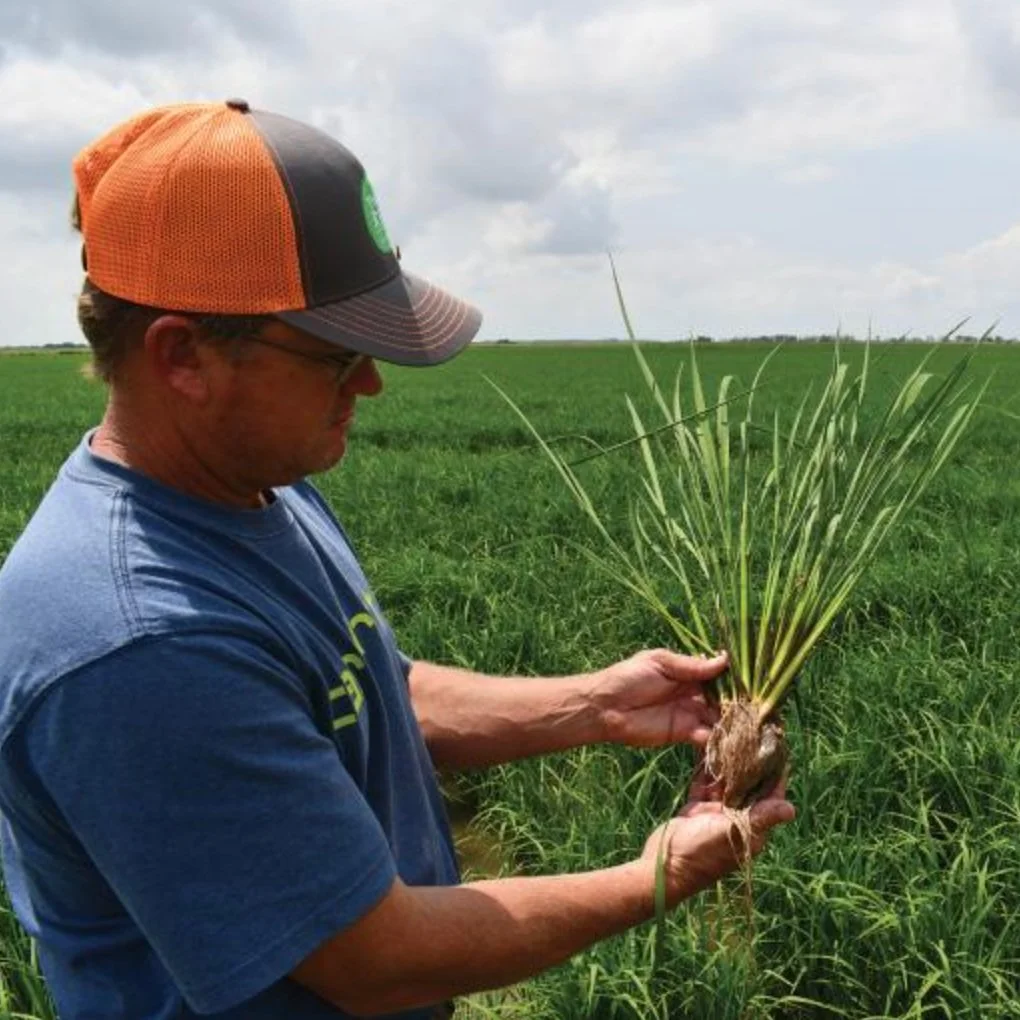RiceBran Technologies earlier this month began a capacity expansion project at its core stabilized rice bran (SRB) facility in Mermentau, Louisiana. According to the company, the added capacity will allow RiceBran to meet growing demand for North American-sourced ingredients for the companion animal market.
Read MoreWeed scientists with the LSU AgCenter are focusing on a pair of herbicides as promising products to control broadleaf weeds and sedge in rice fields.
Read MoreThe latest episode of The Rice Stuff podcast gives a behind-the-scenes look at how the Clearfield and Provisia technologies revolutionized U.S. rice from two people who helped develop them: Dr. Eric Webster, director of the University of Wyoming Agricultural Experiment Station, and Dr. Steve Linscombe, director of the Rice Foundation and USA Rice’s Leadership Class Program.
Read MoreWhen not growing rice, Paul Johnson uses crawfish farming and waterfowl hunting to round out his family farming operation. His wife and kids are an integral part of the business and lifestyle, in which they are active participants.
Read MoreThe Philippines is the eighth largest market for U.S. agricultural exports and the top market in Southeast Asia. Already a longstanding and reliable trading partner, the Philippines continues to offer many opportunities for exporters because of its young and growing population and rising household income.
Read MoreFrom the latest news about top performing Provisia and Clearfield rice varieties to updates from industry leaders, the annual Horizon Ag Louisiana Field Day is the place for farmers looking to stay on top of production challenges while seeking higher yields, better milling quality and more return on their investment.
Read MoreWhen Dr. Steve Linscombe was accepted into the Rice Leadership Development program in 1996, he likely didn’t think he would end up heading the program decades later. That is what the Leadership Program does. It selects rice industry individuals who have applied to the program and develops them into impactful leaders by way of exposing them to people and places they might have never witnessed before.
Read More- John Morgan, a vice president of Supreme Rice Mill in Crowley, Louisiana, has been appointed to serve a second two-year term on the U.S. Department of Agriculture Federal Grain Inspection Service’s (FGIS) Grain Inspection Advisory Committee. Morgan previously served on the committee from 2018-2020.
Morgan is the long-serving chair of the USA Rice Millers’ Association Industry Standards Committee, the main point of contact between the U.S. rice industry and USDA on rice standards and technical issues related to rice milling.
The Grain Inspection Advisory Committee advises FGIS on the programs and services it delivers under the U.S. Grain Standards Act. The Committee represents all segments of the grain industry, including grain producers, processors, merchandisers, handlers, exporters, consumers,
grain inspection agencies, and scientists.
“With his years of experience and industry knowledge, John is an incredible asset to the advisory committee and we’re glad to see USDA has again selected him to serve in this role,” said Peter Bachmann, USA Rice vice president of policy and government affairs. “John has represented us well on this committee and we can rest assured that the rice industry’s concerns and priorities on grain standards will be effectively communicated to USDA.”
Read MoreInsects and other pests can destroy a crop at any stage, reducing yields and grower profits.
Over the past few years, Louisiana has experienced a multitude of pests attacking the rice industry. Growers and researchers continue to be diligent in finding ways to combat the issues that arise to have a successful and productive harvest.
Read MoreThe invasive Mexican rice borer (Eoreuma loftini) has become increasingly problematic in Louisiana in recent years and threatens both rice and sugarcane, the two most important crops in the southern part of the state.
Read MoreToday, the Senate Agriculture, Nutrition, and Forestry Committee held a hearing on Opportunities and Challenges Facing Farmers, Families, and Rural Communities where Agriculture Secretary Tom Vilsack testified and responded to questions on a litany of issues.
Read MoreRice researchers at the Texas A&M AgriLife Research Center at Beaumont have begun a project that utilizes unmanned aerial vehicle, UAV, data to speed up rice cultivar selection and breeding.
The team will use UAVs to capture real-time images of rice crops, extract crop phenotypic traits from the images, and ultimately analyze that information to discover superior, high-yielding rice genotypes.
Read MoreCROWLEY, La. – Supreme Rice, one of the largest rice-milling operations in Louisiana, is investing $16.2 million to develop parboil facilities in Crowley and Mermentau for a new line of ready-to-eat products. The expansion will create 20 direct new jobs, and LED estimates the project will result in 79 indirect jobs, for a total of nearly 100 new jobs in Acadia Parish. The company will retain 181 jobs at its current locations.
Read MoreCongressman Clay Higgins (R-LA) commended Supreme Rice’s announcement of a $16.2 million investment to develop parboil facilities for a new product line.
Supreme Rice will build a new greenfield facility in Mermentau for the parboil operations and develop a new parboil mill inside the existing facility in Crowley. The project is expected to create 20 direct jobs and 79 indirect jobs in Acadia Parish. Read more about the announcement here.
With the volume of rainfall Louisiana has received over the course of 2021, rice producers may be forgiven if irrigation practices aren’t top of mind.
However, researchers must think both in the short and long term, so LSU AgCenter soil fertility specialist Manoch Kongchum is studying if large yields can be achieved with less water.
Kongchum is in the midst of a four-year study at the H. Rouse Caffey Rice Research Station that is examining water use and grain yield from four different water management practices: conventional delayed flooding, alternate wetting and drying, semiaerobic, and furrow irrigation, which is also known as row rice.
Read More














